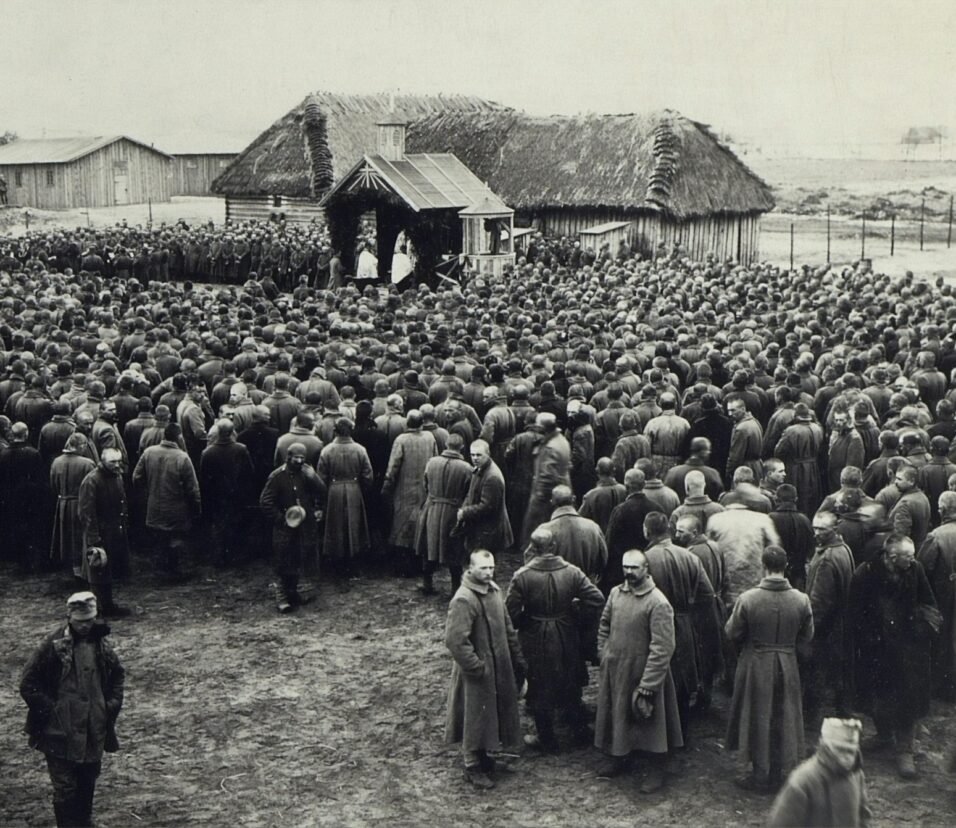Introduction:
World War 1, often labeled ‘The Great War’, was not only a physical confrontation involving millions of soldiers, but it was also a battle of narratives. Propaganda played an instrumental role in shaping perceptions, bolstering support, and demonizing enemies. This deep dive explores the intricacies of World War 1 propaganda and its profound impacts on the societies involved.
Chapter 1: Propaganda – What and Why?
Definition:
Propaganda refers to information, especially of a biased or misleading nature, used to promote or publicize a particular cause or point of view.
Need for Propaganda:
As nations plunged into a protracted war, there was an urgent need to maintain morale, procure resources, and ensure unwavering public support. Propaganda seamlessly filled this role.
Chapter 2: Tools and Techniques
Posters:
Visually gripping posters with succinct slogans were ubiquitous. They invoked emotions ranging from patriotism to fear.
Newspapers and Magazines:
With high literacy rates, print media became a conduit for state-sanctioned information and stories.
Films:
Early films, depicting heroic deeds or staged enemy atrocities, were screened to large audiences, making them potent propaganda tools.
Chapter 3: Themes of WW1 Propaganda
Nationalism:
Citizens were frequently reminded of their nation’s greatness and the necessity of defending its honor.
Enemy Demonization:
Caricatures often portrayed enemies as monstrous, treacherous, and less than human, making it easier for soldiers to fight against them.
Sacrifice:
Themes of sacrifice, both at the frontlines and the home front, were recurrent. This made war efforts appear as a collective endeavor.
Women:
Depictions of women ranged from victims needing protection to crucial contributors to the war effort, often shown in roles like nurses or factory workers.
Chapter 4: Notable Campaigns
Britain’s “Your Country Needs You!”
Featuring Lord Kitchener, this remains one of the most iconic propaganda images.
Germany’s “Helft Uns Siegen!” (Help Us Win!)
Promoted war bonds, emphasizing collective duty.
U.S’s “I Want You for U.S. Army!”
Uncle Sam’s image became synonymous with recruitment drives.
Chapter 5: Effects on Societies
Stirring Nationalism:
Propaganda effectively galvanized citizens, creating a united front against perceived enemies.
Mistrust and Suspicion:
As enemy nations were constantly demonized, mistrust was sown, leading to long-lasting prejudices.
Women’s Evolving Roles:
The depiction of women as more than just caregivers began a dialogue on their broader roles in societies.
Chapter 6: Aftermath and Reflection
War Fatigue:
Despite propaganda’s effectiveness, as the war dragged on and realities became starker, its impact waned.
Legacy for Future Conflicts:
The propaganda machinery of World War 1 set the stage for even more sophisticated campaigns in subsequent conflicts.
Chapter 7: The Artistry Behind Propaganda
Visual Styles:
Many posters utilized bold colors and stark contrasts to grab attention. Art movements of the time, such as Art Nouveau and Futurism, influenced design elements.
Catchy Phrases:
Slogans were crafted to be memorable. They were short, direct, and appealed to emotions, ensuring the message was impactful and retained.
Chapter 8: Propaganda Beyond the Western Front
Central Powers:
While the Allies’ propaganda has been extensively studied, countries like Germany, Austria-Hungary, and the Ottoman Empire had their own strategies, often centered around unity and resistance against Entente imperialism.
Colonies:
Colonial subjects were often appealed to with promises of better treatment, or by invoking loyalty to the ‘motherland’. They were asked to contribute resources and even enlist as soldiers.
Chapter 9: Children and Propaganda
Targeting the Young:
Children were not spared from propaganda. They were shown in posters as victims, as future soldiers, or actively helping in war efforts, collecting scrap, or growing war gardens.
Toys and Games:
War-themed toys, books, and games were manufactured, effectively normalizing the idea of war for children.
Chapter 10: Propaganda’s Subtle Nuances
Atrocity Propaganda:
Exaggerated tales of enemy atrocities were commonplace. Stories, sometimes fictional, of German ‘Huns’ committing unspeakable acts were spread to bolster hatred.
Propaganda and Censorship:
It wasn’t just about promoting a narrative, but also suppressing dissenting voices. Censorship ensured only one dominant narrative prevailed.
Chapter 11: Resistance and Counter-Propaganda
Not Everyone Was Convinced:
While propaganda was influential, there were groups and individuals who resisted, questioned, or offered alternative narratives.
Conscientious Objectors:
Despite intense societal pressure, there were individuals who resisted the draft on moral grounds, often facing severe penalties.
Chapter 12: The Long Shadow of Propaganda
Enduring Stereotypes:
Many stereotypes crafted during World War 1, especially those about certain nationalities, persisted long after the war ended.
Setting the Stage for World War 2:
The propaganda strategies of the First World War influenced those of the Second, with more refined techniques and the addition of radio broadcasts.
Conclusion: The Double-Edged Sword
World War 1 propaganda, while instrumental in rallying nations, also sowed seeds of division and animosity that lingered for decades. It serves as a potent reminder of the media’s power in shaping narratives, for better or worse. As we navigate an era of information overload, discerning fact from fiction becomes ever more crucial, making the lessons from The Great War’s propaganda ever-relevant.







